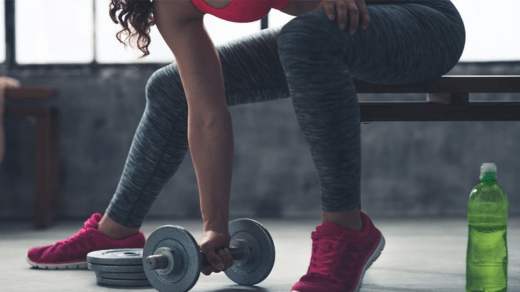
Introduction: Preventing workout injuries is crucial for maintaining a consistent and effective fitness routine. This guide explores 30 key tips for safe training, along with the pros and cons associated with each tip, to help you understand the importance of injury prevention and the strategies to achieve it.
- Warm-Up Properly:
- Pros: Prepares muscles and joints for exercise.
- Cons: May add time to your workout.
- Cool Down After Workouts:
- Pros: Reduces muscle soreness and aids recovery.
- Cons: Requires additional time at the end of a workout.
- Proper Form and Technique:
- Pros: Prevents overuse and acute injuries.
- Cons: May require guidance and practice.
- Gradual Progression:
- Pros: Reduces the risk of overtraining and injury.
- Cons: Progress may seem slow.
- Listen to Your Body:
- Pros: Allows for rest and recovery when needed.
- Cons: May be difficult to differentiate between discomfort and injury.
- Proper Nutrition:
- Pros: Supports muscle recovery and overall health.
- Cons: Requires planning and dietary discipline.
- Stay Hydrated:
- Pros: Prevents dehydration-related issues.
- Cons: Excessive water intake can be harmful.
- Adequate Sleep:
- Pros: Supports muscle repair and mental focus.
- Cons: May require lifestyle adjustments.
- Use Appropriate Equipment:
- Pros: Reduces the risk of equipment-related injuries.
- Cons: Costs associated with quality gear.
- Avoid Overtraining:
- Pros: Prevents physical and mental burnout.
- Cons: Balancing training intensity and rest can be challenging.
- Incorporate Rest Days:
- Pros: Allows for full recovery and muscle repair.
- Cons: Rest days may feel counterproductive.
- Stretching Routine:
- Pros: Improves flexibility and reduces muscle tension.
- Cons: May not prevent all injuries.
- Balance Strength Training:
- Pros: Reduces muscle imbalances and injury risks.
- Cons: Requires time for both strength and flexibility work.
- Proper Footwear:
- Pros: Supports posture and alignment during workouts.
- Cons: Quality footwear can be expensive.
- Regular Check-Ins with a Trainer:
- Pros: Offers expert guidance and form correction.
- Cons: Costs associated with personal training.
- Incorporate Cross-Training:
- Pros: Reduces the risk of overuse injuries.
- Cons: May require learning new skills.
- Stay Informed About Your Sport:
- Pros: Awareness of injury risks and prevention.
- Cons: May not apply to all fitness activities.
- Warm Clothing in Cold Weather:
- Pros: Prevents cold-related injuries.
- Cons: Requires extra layers and planning.
- Use Spotters for Weightlifting:
- Pros: Ensures safety during heavy lifts.
- Cons: Not always available in home gyms.
- Avoid Overuse of Painkillers:
- Pros: Prevents masking of underlying injuries.
- Cons: May endure some discomfort during workouts.
- Regular Health Check-Ups:
- Pros: Identifies and addresses health concerns.
- Cons: Requires scheduling and potential medical costs.
- Avoid Excessive Ego Lifting:
- Pros: Prevents lifting weights beyond your capacity.
- Cons: May challenge your ego in the gym.
- Properly Maintain Equipment:
- Pros: Ensures safe and efficient use of gear.
- Cons: Maintenance can be time-consuming.
- Use Safety Gear When Needed:
- Pros: Protects vulnerable body parts.
- Cons: May feel uncomfortable or restrictive.
- Properly Hydrate During Workouts:
- Pros: Maintains energy levels and prevents dehydration.
- Cons: May require frequent water breaks.
- Warm-Up for Intense Cardio:
- Pros: Prepares the cardiovascular system.
- Cons: Adds time to your workout routine.
- Avoid Overstretched Joints:
- Pros: Prevents joint hyperextension injuries.
- Cons: Requires awareness during exercises.
- Properly Fit Sports Bras:
- Pros: Reduces discomfort and potential breast injuries.
- Cons: Costs associated with quality sports bras.
- Use Chalk for Grip:
- Pros: Enhances grip strength and prevents slips.
- Cons: May not be suitable for all exercises.
- Incorporate Massage and Foam Rolling:
- Pros: Relieves muscle tension and aids recovery.
- Cons: May not fully replace professional massage therapy.
In conclusion, injury prevention is a critical aspect




